みゃーくとぅなぎ すまとぅなぎ / Myāku tunagi, Sumatu nagi : (ONLY 20 COPIES)
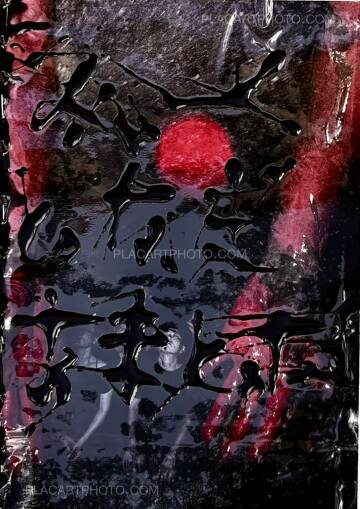.jpg)
Ryu Ika
みゃーくとぅなぎ すまとぅなぎ / Myāku tunagi, Sumatu nagi : (ONLY 20 COPIES)
Photographs: Ryu Ika
Publisher: Self Published
62 pages
Year: 2025
Comments: Handmade sewn softcover, handwritten title with resin. B&W and colors printing with 2 metallic papers. Edition of 20 copies signed and numbered.
During May to August 2024, I was invited to do an artist residency on a remote island called Miyagoshima, in Okinawa. I arrived with no clear plan, just myself, some camera equipment, and a sense of uncertainty. On the day I arrived, I learned that tWhe grandfather of the gallery owner, who happened to be the most respected monk on the island, had just passed away. Not knowing the man, nor the right words to say, I kept silent for a week.
On the seventh day, the gallery owner approached me and asked if I would photograph his grandfather’s funeral. It was the first funeral I had ever attended in Japan. I followed the family through the entire ritual, from the prayers to the burning of the body, to the moment when they picked up the hot bones with chopsticks and placed them carefully into an urn. That experience touched me deeply. It felt like I had suddenly arrived at the rooftop of death on this island, and I thought, if I had touched death, then I must also seek the rooftop of life.
So I began searching. I traced the symbolic starting point of the island. I interviewed a pregnant woman. I joined every local festival I could. I wandered and spoke to as many people as possible. Eventually, I created a visual art collage of these moments, printed on fabric, sewn together with red ropes, and used to cover all the walls of the gallery. It became a skin of collective memory, a tactile and immersive presence of life. This island reminded me deeply of my hometown, Inner Mongolia. Even though it is just a small island, it gave me a sense of vastness, of emotional space—like an endless grassland.
The way people live there, how they treat others, how they speak their own language while being part of Japan, holding onto their own identity and culture, it was all so familiar to me. It inspired me to weave my own culture into the culture I was experiencing on the island, to let the two meet and speak through mywork. For the exhibition, I wanted to reflect this journey between life and death. At the heart of the installation was a mound of stones, inspired by the Mongolian Ovoo, a sacred stone structure built on the grasslands. In Mongolia, these stone piles serve as both road signs and spiritual offerings.
They help travelers navigate the vast open spaces where no roads, no trees, no buildings exist. They are wishes for safety and joy. I wanted to merge this symbol of my own culture with the land I had come to know. Then I discovered that the entire island was made of limestone, meaning that the people there were quite literally living on a giant coral. I was deeply moved. I thought, what if I bring all the people—who came from the limestone—back onto the limestone, literally, physically?
So I began printing the portraits I had taken, more than 300 in total, onto pieces of limestone collected from the island itself. I built them into a structure within the gallery space, a reconstructed ovoo, a mountain of people and memory, bringing the island back into itself. Though I stayed for less than three months, it felt like a lifetime. I had experienced a full cycle, death, life, and the spaces in between. There’s one more part, though not necessary, but meaningful to me. In the center of the exhibition was a black pipe, an object I’ve used in multiple works.
During the early days of COVID, isolated and frustrated, I randomly searched on Amazon with words like “freedom,” “air,” “exchange.” This duct popped up, looking eerily similar to my photos, to my feelings. I bought it immediately. Since then, the pipe has become a personal symbol, of connection, of longing. Like photography, the pipe is a tool that channels something from one side to another, even though you never quite know who or what you will meet at the other end. You only know the communication exists. I’ve also used it to represent the umbilical cord, the first connection between a mother and child. In this way, the pipe has come to stand for all my efforts to reach across, to find others, to understand where I come from, and where I might be going.
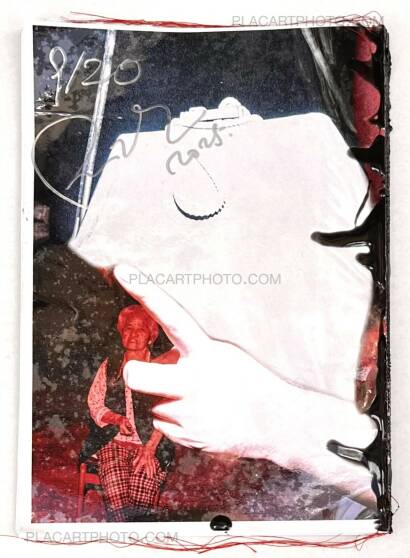.jpg)
.jpg)
.jpg)
.jpg)
.jpg)
.jpg)
.jpg)
.jpg)
.jpg)
.jpg)
.jpg)
.jpg)
.jpg)
.jpg)
.jpg)
more books by Ryu Ika
-
A part of u/me (Signed)
by Ryu Ika
sold -
A part of u/me vol.2 (Signed)
by Ryu Ika
sold -
The Second Seeing (Signed copy)
by Ryu Ika
sold
more books tagged »okinawa« | >> see all
-
Okinawa
by Keizo Kitajima
sold -
Morika's Dreams (Signed)
by Mao Ishikawa
sold -
My native Island: Okinawa (vintage dedication)
by Yasuo Higa
sold -
Camp Okinawa
by Shomei Tomatsu
sold -
Okinawan portraits 2012-2016
by Ryuichi Ishikawa
sold -
Back to Okinawa 1980/2009 (Signed)
by Keizo Kitajima
sold
more books tagged »extremely limited« | >> see all
-
RENDEZ-VOUS OFF TRACES FALLING APART INTO (Signed and numbered...
by Sergej Vutuc
Euro 30 -
The Core (ONLY 100 COPIES)
by Stéphane Charpentier
sold -
Chicatanas (EDT OF 21)
by Zaida Kersten
Euro 160 -
SOLSTICE (Signed and numbered, edt of 10)
by Julia Bohle
sold -
OKINAWAN PORTRAITS (SIGNED)
by Ryuichi Ishikawa
sold -
THE GRAY LINE (ARTIST'S EDITION OF 11)
by Laura Rodari
sold
more books tagged »Artist's book« | >> see all
-
A Document Made by Paul Thek and Edwin Klein
by Paul Thek and Edwin Klein
sold -
NOTES #1 (SIGNED AND NUMBERED, edt of 3)
by Sandrine Marc
Euro 150 -
“䷚” Swallowing (with silver gelatin print)
by Arno Bouchard
Euro 1000 -
Mont Fuji (EDT OF 10)
by Jean Pierre Joly
Euro 25 -
MALIA (SIGNED AND NUMBERED, edt of 3)
by Laura Rodari
Euro 2000 -
Food, sex and TV
by Robert Heinecken
Euro 60
more books tagged »handmade« | >> see all
-
Berlin / Deep in Thought (signed)
by Toshitsugu Yamawaki
sold -
ERNA HELENA ANIA (Art edition of 45)
by Tomasz Laczny
Euro 380 -
In search of lost memories (Signed and numbered, edt of 33)
by Hajime Kimura
sold -
END TIME (SIGNED AND NUMBERED WITH PRINT, edt of 30)
by Tomasz Laczny
sold -
HIKARI 2024 (Edt of 50)
by Collective
sold -
Siwah (SIGNED)
by Paola Bragado
Euro 90
Books from the Virtual Bookshelf josefchladek.com

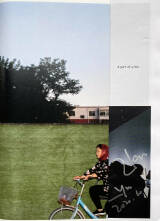


























_eisen._(bauen_in)_eisenbeton.;jpg)
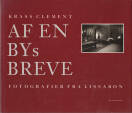
;jpg)

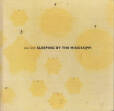
_;jpg)
 Facebook
Facebook Instagram
Instagram